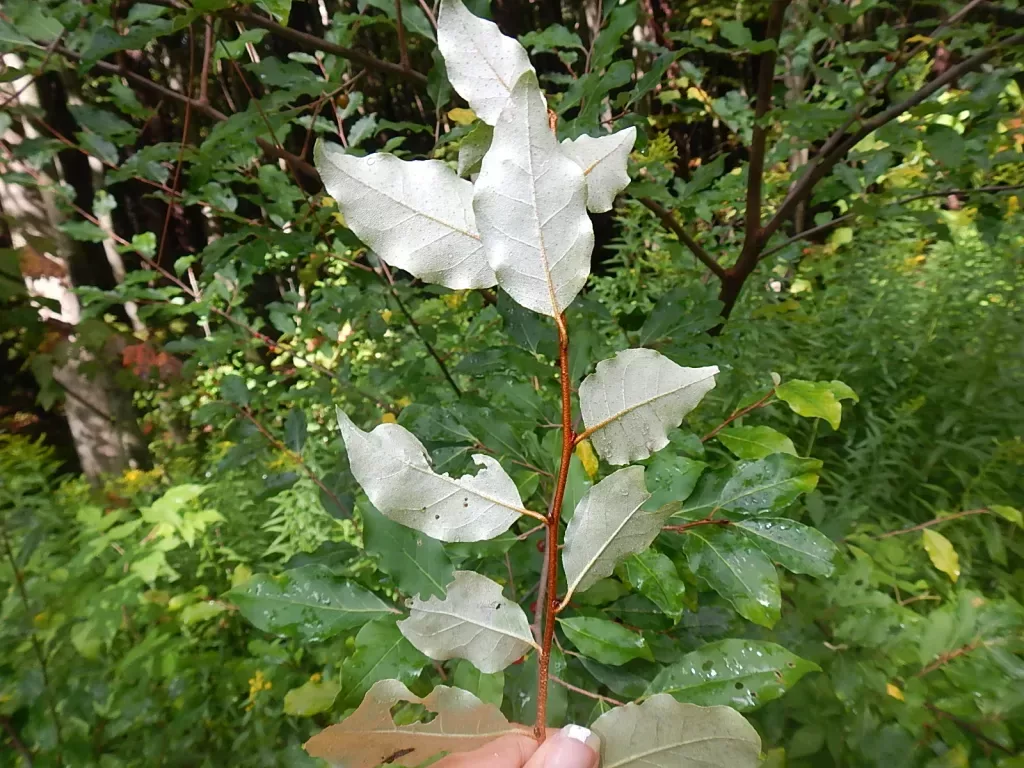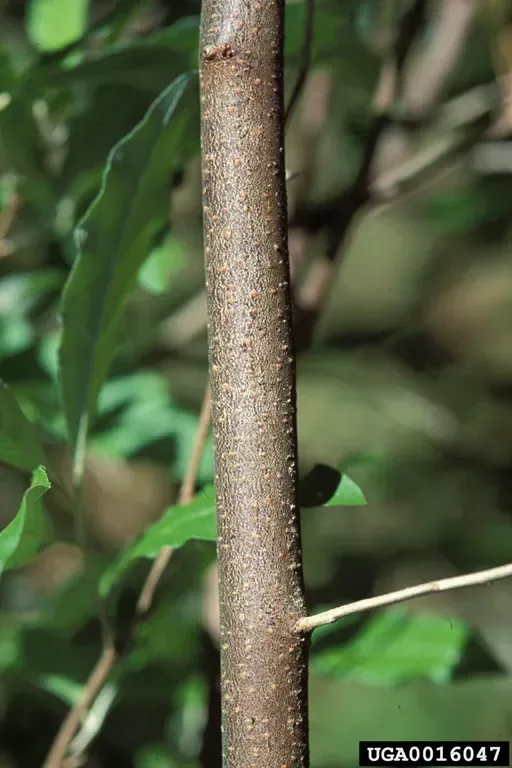
Autumn olive is a large deciduous shrub that can grow to a height of 15 ft, and a width of 20 ft. Its dull green leaves are oval, or lance-shaped, with entire, wavy margins and silvery undersides. Autumn olive flowers in the early summer. Mature shrubs produce dense clusters of bright red berries.



Autumn olive outcompetes and shades out native plants. It hosts nitrogen-fixing bacteria in its root nodules, similar to a legume, allowing it to grow in even the least fertile soils. Its nitrogen-fixing ability can also alter soil composition and disrupt normal nutrient cycling. A single shrub can produce 200,000 seeds in one year. Its berries are very attractive to birds, which help the seeds disperse.